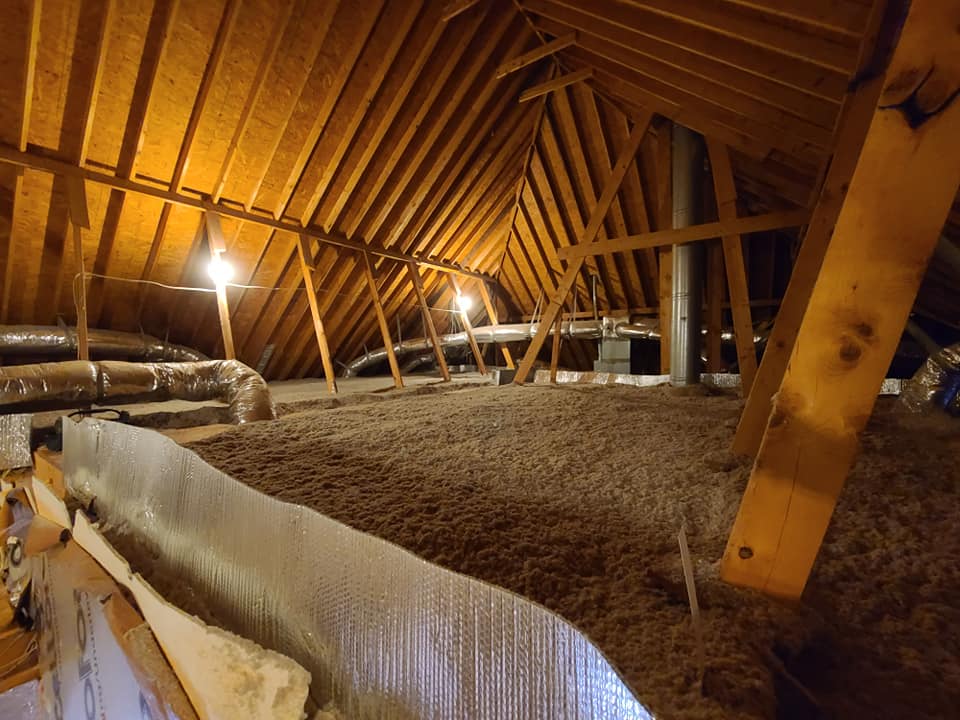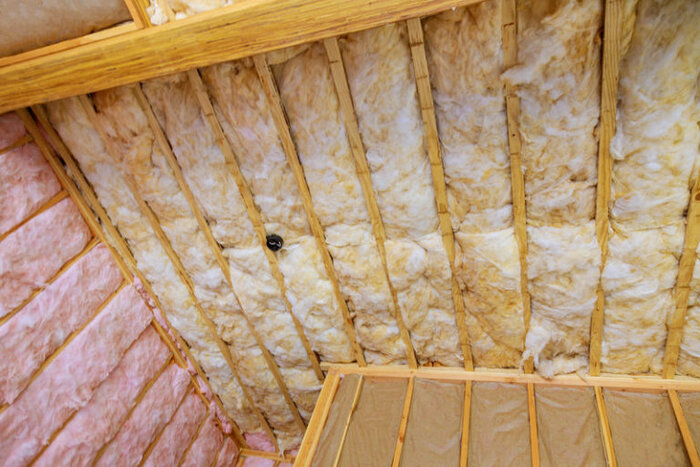Maximize Your Energy Savings with Expert Attic Insulation DFW Solutions
Maximize Your Energy Savings with Expert Attic Insulation DFW Solutions
Blog Article
Discover the Different Kinds of Attic Insulation and Their Distinct Benefits for Your Home's Energy Efficiency

Fiberglass Insulation
Fiberglass insulation is one of one of the most generally utilized materials for attic room insulation because of its superb thermal efficiency and cost-effectiveness. Made up of little glass fibers, this material properly catches air, producing an insulating barrier that assists maintain consistent indoor temperature levels. Its high R-value per inch makes it particularly efficient at standing up to heat transfer, which is crucial for power preservation in homes.
Setup of fiberglass insulation is reasonably simple, often readily available in batts or loose-fill forms, accommodating different attic room arrangements. In addition, it is immune and non-combustible to moisture, decreasing the danger of mold advancement. This longevity adds to its long life, making fiberglass a practical long-lasting investment for house owners.
In addition, fiberglass insulation is frequently made from recycled products, which enhances its eco-friendliness. The material can also add to soundproofing, minimizing noise transfer between spaces. While it is necessary to wear protective equipment during setup to avoid inflammation from the fibers, the overall benefits of fiberglass insulation, including power savings and environmental considerations, make it a preferred selection for boosting attic room efficiency and promoting a comfortable living setting.
Spray Foam Insulation
Spray foam insulation is a very efficient option for attic insulation, understood for its remarkable air sealing and thermal efficiency. This cutting-edge insulation material is made up of a combination of isocyanate and polyol material, which, when incorporated, expands swiftly to fill up gaps and tooth cavities in the attic room space. Its ability to stick to different surface areas guarantees a continuous obstacle against air leaks, considerably minimizing warm loss throughout chillier months and warmth gain during warmer seasons.
One of the crucial benefits of spray foam insulation is its high R-value per inch, which means it provides excellent thermal resistance in a reasonably thin application. This is specifically helpful in attics where room is usually restricted. Additionally, spray foam can aid reduce dampness build-up, decreasing the threat of mold and mildew development, which can be damaging to both the structure and indoor air top quality.
While the preliminary cost of spray foam insulation might be more than conventional alternatives, its long-lasting power savings, combined with boosted comfort and enhanced home value, make it a rewarding investment for homeowners looking for boosted power effectiveness. Attic Insulation DFW. On the whole, spray foam insulation stands apart as a reliable service for enhancing attic insulation
Cellulose Insulation

Cellulose insulation is a popular choice for attic room insulation, primarily composed of recycled paper items treated with fire retardants. This eco pleasant option is understood for its excellent thermal performance, successfully decreasing warmth transfer in both summer and wintertime months. The dense make-up of cellulose enables it to fill spaces and gaps in attic areas, supplying a smooth obstacle versus air leaks.
Among the substantial benefits of cellulose insulation is its capacity to resist mold and mildew and insects, owing to the fire resistant treatments utilized throughout manufacturing. In addition, it boasts a high R-value per inch, which equates right into premium energy effectiveness. Homeowners can anticipate reduced heating & cooling expenses as an outcome of enhanced insulation.
Installation is typically achieved via blowing loose cellulose into the preferred location, enabling a fast and effective process. This technique likewise minimizes anonymous disturbance to the existing structure. Moreover, cellulose insulation has a fairly low ecological effect, as its production procedure makes use of recycled materials, adding to sustainable building practices.
Rock Woollen Insulation
Amongst the numerous alternatives for attic room insulation, rock woollen, additionally called mineral woollen, sticks out as a result of its excellent thermal and acoustic efficiency. Made from natural or recycled materials, rock wool is produced by melting rock and rotating it right into fibers, leading to a product that provides superb insulation homes.
Among the significant advantages of rock wool insulation is its high R-value, which shows its efficiency in withstanding warm flow. This characteristic not just enhances energy performance yet additionally adds to maintaining a comfy interior temperature year-round. Additionally, rock woollen is naturally fire-resistant, making it a more secure alternative for homes as it can hold up against high temperature levels without melting or releasing hazardous fumes.
Moreover, rock woollen insulation stands out in soundproofing capacities, properly minimizing sound transmission between spaces and from outdoors sources. In general, rock wool insulation supplies an extensive remedy for enhancing energy performance, safety and security, and comfort in property setups.
Radiant Obstacle Insulation
Radiant barrier insulation serves as a reliable remedy for lessening warmth transfer in attic rooms, particularly in warmer climates. This kind of insulation works by reflecting induction heat away from living rooms, thus minimizing the quantity of warm that enters a home during hot weather condition - Attic Insulation DFW. Generally composed of a highly reflective material, such as aluminum foil, radiant barriers are set up in attics, dealing with the roof covering, where they can obstruct inbound warmth from the sun
The primary advantage of glowing obstacle insulation is its capacity to reduced air conditioning costs. By reflecting heat as opposed to absorbing it, radiant barriers can help maintain a more secure interior temperature level, lowering the workload on cooling systems. This efficiency equates into lower power costs and increased convenience for homeowners.
In enhancement to energy financial savings, radiant barriers can also add to improved interior air high quality. By minimizing heat build-up, they aid reduce moisture levels, which can prevent mold and mildew development and enhance general air flow. When installed properly, radiant barrier insulation can be an important addition to any type of energy-efficient home, making it a worthy consideration for home owners click to investigate aiming to improve their attic insulation method.
Final Thought
In final thought, comprehending the numerous types of attic room insulation-- fiberglass, spray foam, cellulose, rock woollen, and radiant obstacles-- allows homeowners to make educated choices pertaining to energy performance. By selecting the proper insulation product, significant reductions in energy prices can be achieved, along with enhancements in interior comfort.

In verdict, understanding the numerous types of attic room insulation-- fiberglass, spray foam, cellulose, rock wool, and radiant obstacles-- makes it possible for property owners to make enlightened choices relating to energy effectiveness.
Report this page